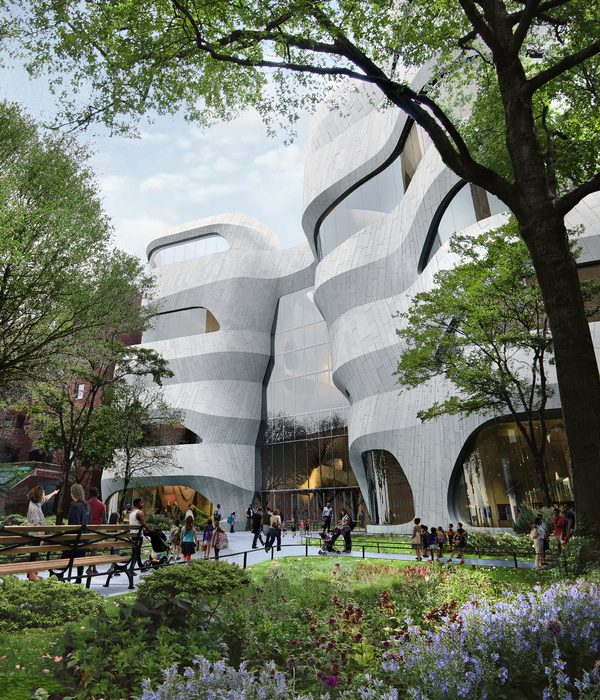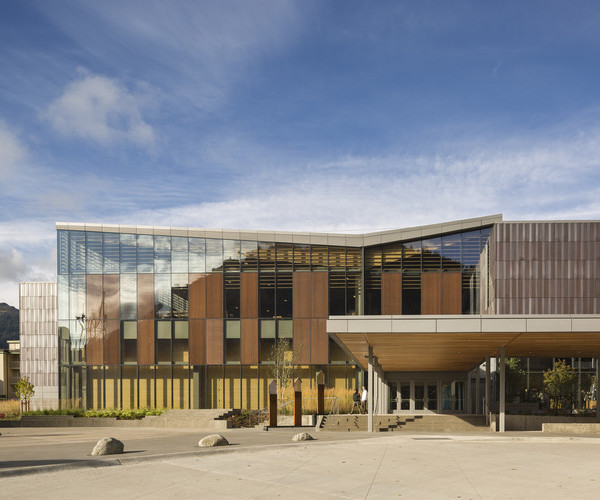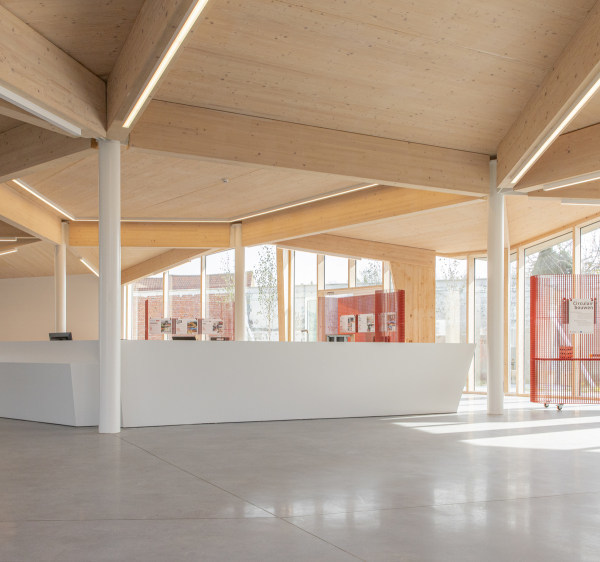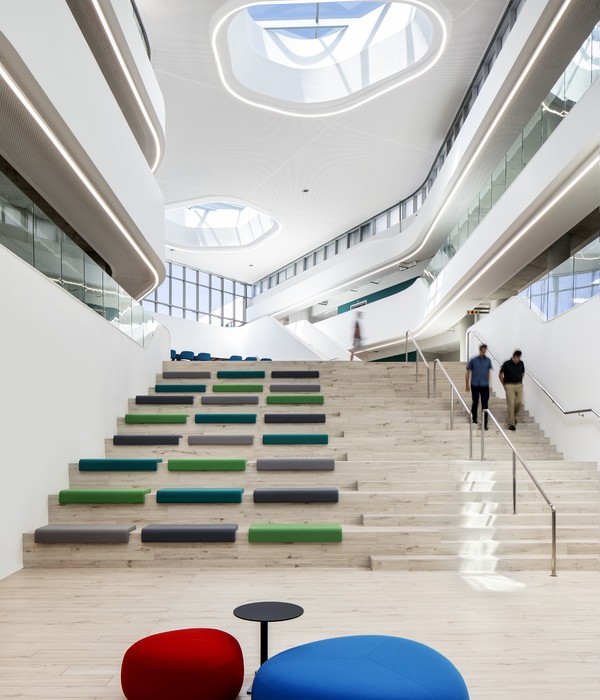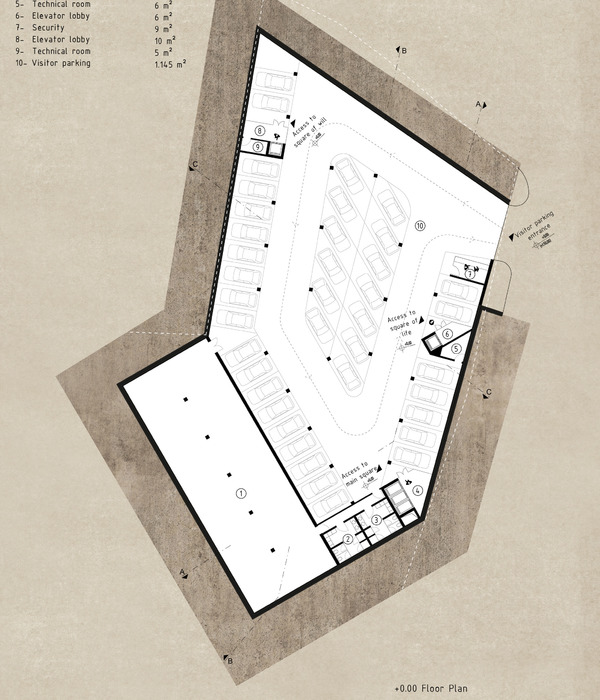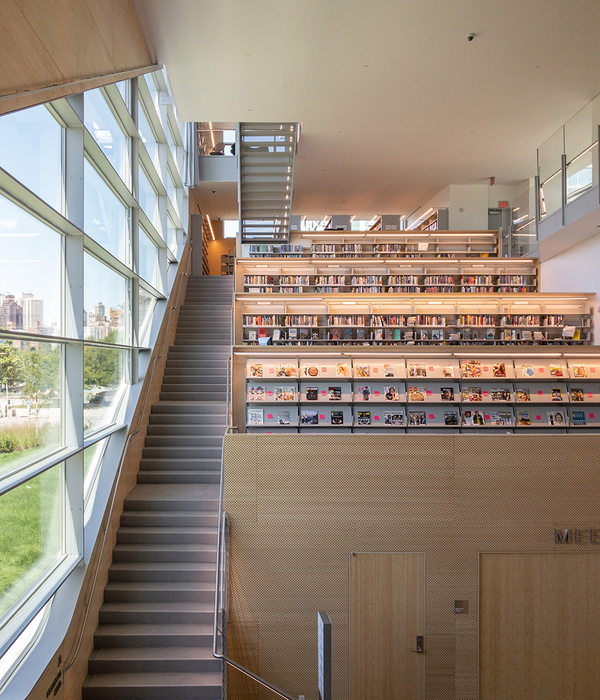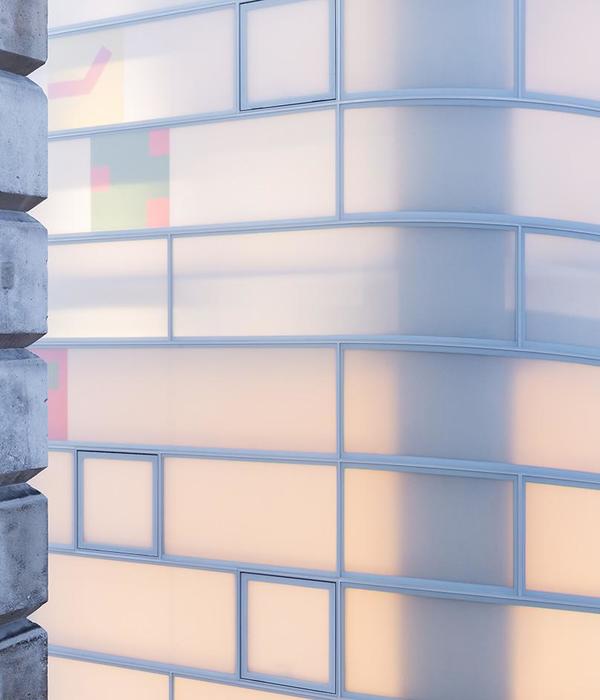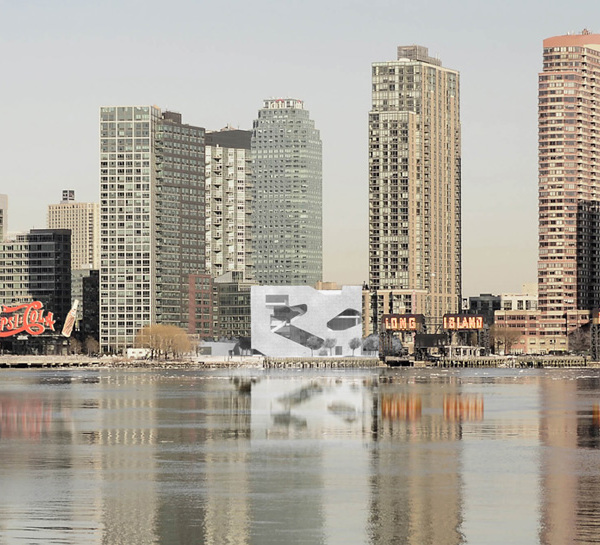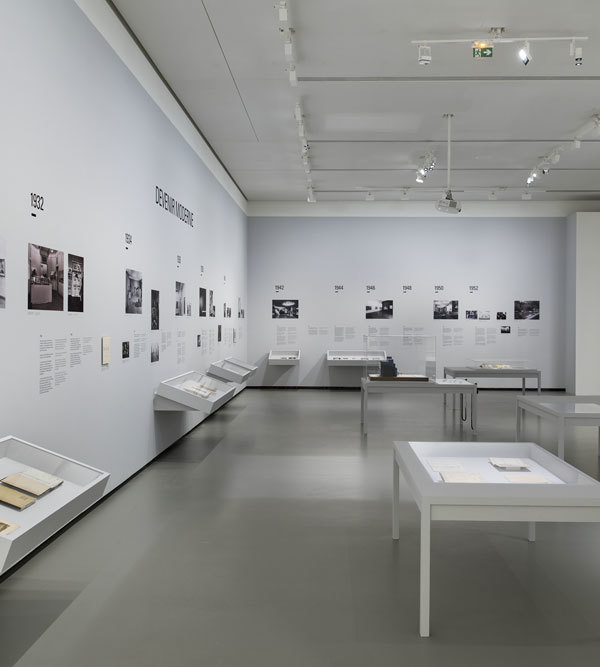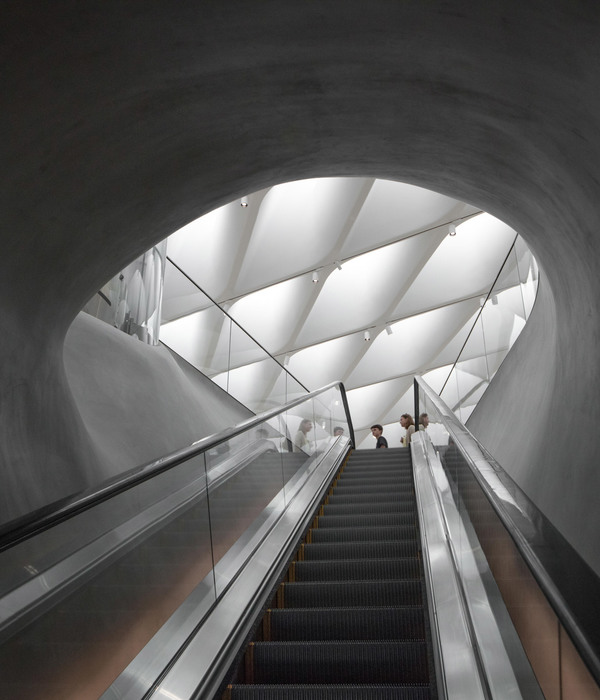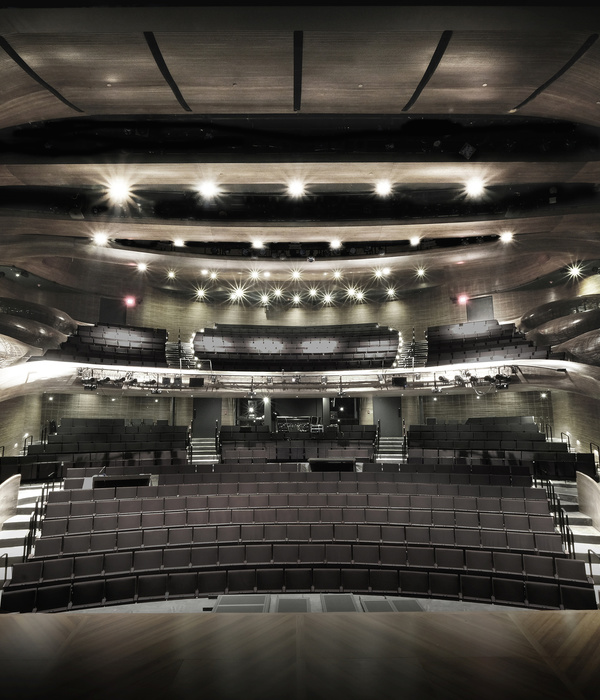Alfar de Los Tejares是西班牙最好的罗马陶瓷厂之一。工厂靠近一条永久性人工运河,周边还坐落着几家泥浆采石场。除了得天独厚的地理位置外,该工厂还因其规模以及在其场地中发现的考古遗迹而得名。该考古遗迹位于卢塞纳郊区,靠近市政污水处理厂,毗邻N-340国道,周边是茂盛的橄榄林与散落在国道两侧的工业建筑。
The Alfar de Los Tejares is one of the best examples of a Roman pottery factory in our country, both because of its location – next to a permanent water channel and several mud quarries – and because of its size and conservation. The archaeological remains are located on the outskirts of the city, next to the municipality’s treatment plant, bordering the N-340 to the north, in an area dominated mainly by olive groves and industries that appear around the national highway.
▼项目鸟瞰,aerial view of the project © ANTONIO RASO MARTÍN
考古遗迹是在污水处理厂的地基挖掘工作中被发现的。虽然被部分损毁,但遗迹清晰地展示出场地的两段历史时期。第一个时期是公元一世纪至二世纪之间,当时的工厂生产的是普通陶瓷与建筑材料。第二个时期是公元4世纪下半叶至公元5世纪的前几十年之间,据遗迹推断这里很有可能曾是一所住宅。场地的地面水平标高因为遗迹的挖掘而降低。
This archaeological complex, discovered and partially destroyed during the excavation works of a treatment plant, presents two periods of occupation, the first, as alfar, between the 1st and 2nd centuries AD, with productions of common ceramics and construction material; and a second, between the second half of the 4th century and the first decades of the 5th century AD, possibly as a dwelling. The remains are included in the excavation, which lowers the ground level at its location.
▼主入口立面,entrance facade © ANTONIO RASO MARTÍN
▼背立面,back facade © ANTONIO RASO MARTÍN
Alfar Romano Los Tejares展览中心则是为了保护这些珍贵的现存遗址而建造的单层建筑,堪称一个考古活动的容器。建筑师试图通过采用掺杂有玻璃纤维的石灰石膏饰面,结合彩陶材质营造出一种干燥陶土的外观效果,进而将建筑与自然景观融为一体,并使其与该地区的工业建筑区分开来。
The Alfar Romano Los Tejares Exhibition Center in Lucena is a shell building that develops on one floor, wrapping the valuable existing remains. The building is a container of archeology, we have tried to give a sensation of arid terracotta appearance with the facade finish, lime plaster with fiberglass, chromatic and ceramic concept, adapting to the natural landscape and differentiating itself from the industrial buildings in the area.
▼主入口与考古遗迹,Main entrance and archaeological remains © ANTONIO RASO MARTÍN
展览中心由两个部分组成,分别为带有两个天窗的初步入口区域,以及引导游客向下参观遗迹的走道区域。入口区域还可以作为举办活动、展览、会议、演示等的多功能文化场所使用。穿过这个多功能区后,游客们可以沿着走道继续游览整个考古场地,连贯的线性参观路线将整个展览中心变身为艺术画廊,有关遗迹的历史信息也可以通过墙壁上的投影展示给观众。场地遗址内共有七个大小不同的窑炉,围绕窑炉展开的工作/服务区,以及仓储区。仓储区内设有仓库,曾作为陶瓷烧制前的准备工作室以及成品库房使用。
There are two areas, a preliminary entrance area with two skylights and a space below as a visitor’s route to the archaeological remains. In the first part of access, it will be used for holding events, exhibitions, conferences, presentations, etc. After passing through this multipurpose space, the continuous tour of a perimeter gallery, visualizing the site, serving as an exhibition space, where information about its history can be displayed through projections. The enclave has seven ovens of different sizes, a service area for the ovens and a third sector, made up of a warehouse that would perform the functions of pre-hatchery and warehouse.
▼入口前厅,entrance hall © ANTONIO RASO MARTÍN
▼前厅设有两个天窗,the entrance hall features two skylights © ANTONIO RASO MARTÍN
▼前厅可以作为多功能文化场所使用,the entrance hall can be used as a multifunctional cultural venue © ANTONIO RASO MARTÍN
▼主要展厅与遗址概览,overall of the main exhibition halls and the archaeological site © ANTONIO RASO MARTÍN
▼考古遗址与洁白的墙面形成对比,The archaeological site contrasts with the white walls © ANTONIO RASO MARTÍN
▼位于遗址一侧参观走道,visitor walkway located on one side of the site © ANTONIO RASO MARTÍN
▼由走道入口看遗址,Viewing the archaeological site from the walkway entrance © ANTONIO RASO MARTÍN
▼区位图,site location © ANTONIO RASO MARTÍN
▼平面图,floor plan © ANTONIO RASO MARTÍN
▼立面图,elevations © ANTONIO RASO MARTÍN
Project name: ALFAR ROMANO EXHIBITION CENTER Location: Lucena (Cordoba) Promoter: Illustrious City Council of Lucena (Córdoba) Intervening architects: Antonio Raso Martin / César Egea Nieto / Carlos Garcia Fernandez De Villalta Mechanical: Francisco José Pérez López City Council collaborators: Javier De Vera, architect / Daniel Botella, archaeologist
{{item.text_origin}}

